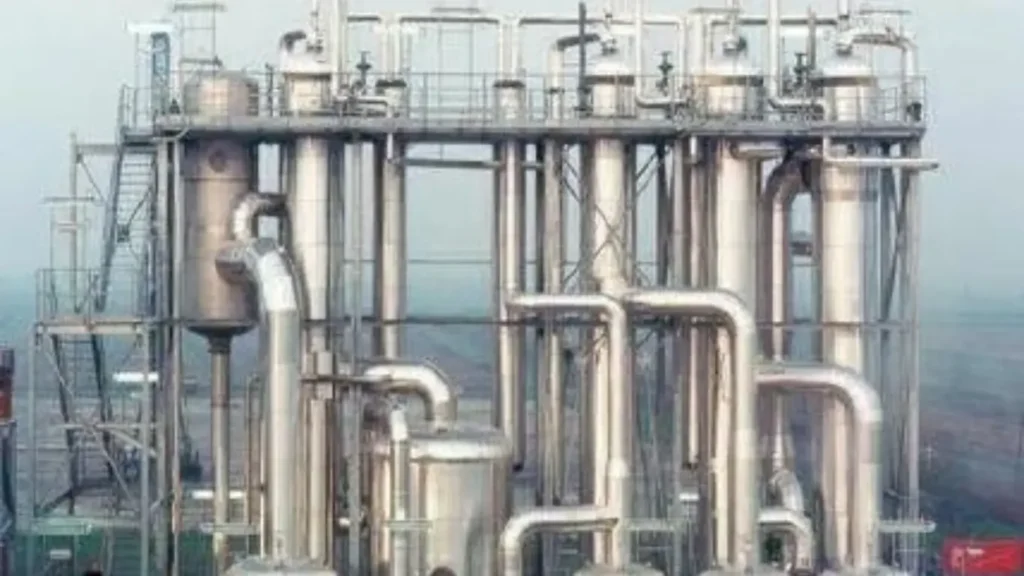As environmental regulations tighten and water scarcity intensifies, Indian industries are increasingly turning to Zero Liquid Discharge (ZLD) systems to manage their wastewater. There’s a growing demand for solutions that are both environmentally friendly and effective in the ever-changing world of managing wastewater. We will take a closer look at two major players in this arena – Scaleban Technology and MEE Evaporators – to see how Scaleban is making a positive impact on creating more sustainable ways to treat wastewater effectively than MEE evaporators. In this blog, we’ll look into the comparative analysis of Scaleban Technology and MEE Evaporators, exploring how they’re helping to make wastewater treatment more eco-friendly and efficient.
Click here to look into a greener, more efficient world of wastewater management!
Scaleban Technology: Embracing the Power of Zld systems in India
Scaleban technology represents an advanced water treatment solution that addresses challenges associated with traditional Zero Liquid Discharge (ZLD) systems like Wastewater Reverse Osmosis (RO) and Multiple Effect Evaporation (MEE). After undergoing Effluent Treatment Plant (ETP), the treated wastewater becomes a makeup for cooling towers, operating at high Cycle of Concentration (COC) values of 15-20 and Total Dissolved Solids (TDS) concentrations of 30%, with controlled blowdown that doesn’t compromise plant performance.
This approach eliminates the necessity for fresh water in cooling towers, reduces significant blowdown from these towers, and ensures zero scaling, corrosion, and biofouling in both cooling towers and heat exchangers.
A Comparative Analysis
When evaluating these two technologies, it becomes evident that both Scaleban and MEE Evaporators contribute significantly to the Green Revolution in wastewater treatment. While Scaleban focuses on preventing scale formation in heat transfer areas, uses cooling towers towers as a evaporators, plays significant role in lowering CO2 emission and improving overall efficiency, MEE Evaporators excel in achieving zero-liquid discharge by using steam, electricity as a source of energy to operate.
But while Multiple Effect Evaporation (MEE) evaporators offer several benefits in wastewater treatment, there are also some notable disadvantages associated with this technology:
- They consume high amounts of energy.
MEE evaporators often require significant amounts of energy to operate, especially in multi-effect systems. The process of evaporating water through multiple stages can lead to higher operational costs and increased environmental impact due to elevated energy consumption.
- They have a Complex Design and Maintenance.
The design of MEE evaporators can be intricate, involving multiple stages and components. This complexity may lead to challenges in operation and maintenance, requiring specialized knowledge and skills for proper functioning.

Click here to look into a greener, more efficient world of wastewater management!
- They are Capital Intensive.
The installation of MEE evaporators involves a substantial upfront cost. The complex design, coupled with the need for specialized materials and components, can make the initial investment significantly higher compared to other wastewater treatment technologies.
- They have a limited Applicability for Small-Scale Operations
Not Ideal for Small-Scale Facilities: MEE evaporators may not be well-suited for small-scale wastewater treatment facilities due to their size, complexity, and high initial cost. Smaller operations may find more cost-effective and practical solutions for their specific needs.
- They create Corrosion and Scaling Issues.
The use of certain materials in MEE evaporators may be susceptible to corrosion over time, especially when dealing with corrosive elements present in wastewater. This can lead to maintenance challenges and the need for regular inspections and repairs.
While MEE evaporators offer effective wastewater concentration and zero-liquid discharge capabilities, it’s important to consider these disadvantages when evaluating whether this technology is the most suitable solution for a particular wastewater treatment scenario. The choice of technology should align with the specific needs, scale, and operational requirements of the facility.
So, when comparing these two technologies, it’s like choosing between different superhero powers for your wastewater treatment plant. Scaleban is like a shield against scale problems, making everything run smoother, while MEE Evaporators are like wizards concentrating their magic to make sure almost no liquid is wasted.
The advantages of Scaleban over MEE (Multiple Effect Evaporation):
- They have a User-Friendly Implementation.
Scaleban Technology is known for its user-friendly design, making it easier to implement and integrate into existing wastewater treatment systems. Its straightforward approach ensures that users, regardless of their level of expertise, can efficiently adopt and manage the technology without extensive training.
- They are environmentally friendly.
Scaleban employs environmentally conscious formulations that are non-toxic and biodegradable. This commitment to green practices not only ensures the safety of the treatment process but also aligns with broader sustainability goals.
- They also prevent Scaling.
Scaleban is specifically engineered to prevent scale formation in pipes and equipment. By addressing scaling issues proactively, it significantly improves the efficiency of wastewater treatment processes. This is particularly advantageous in industries where scale accumulation is a common challenge.
- They help in Reducing Energy Consumption.
With its focus on preventing scale, Scaleban contributes to a reduction in energy consumption within wastewater treatment systems. The energy-efficient design of Scaleban translates into cost savings and a lower overall environmental impact compared to technologies that may require more energy-intensive processes.
- They are Cost-Effective.
Scaleban’s ability to prevent scale buildup not only enhances operational efficiency but also extends the lifespan of pipes and equipment. This results in cost savings by reducing the frequency of maintenance and the need for premature replacements.
Hence, Scaleban Technology stands out as a frontrunner in the Green Revolution for wastewater treatment. Employing innovative methods, this solution addresses the challenges of zld evaporator scaling, a common issue in industrial wastewater systems. By preventing scale accumulation, Scaleban not only enhances the efficiency of treatment processes but also reduces the environmental impact and boosting the zld solutions in India.
